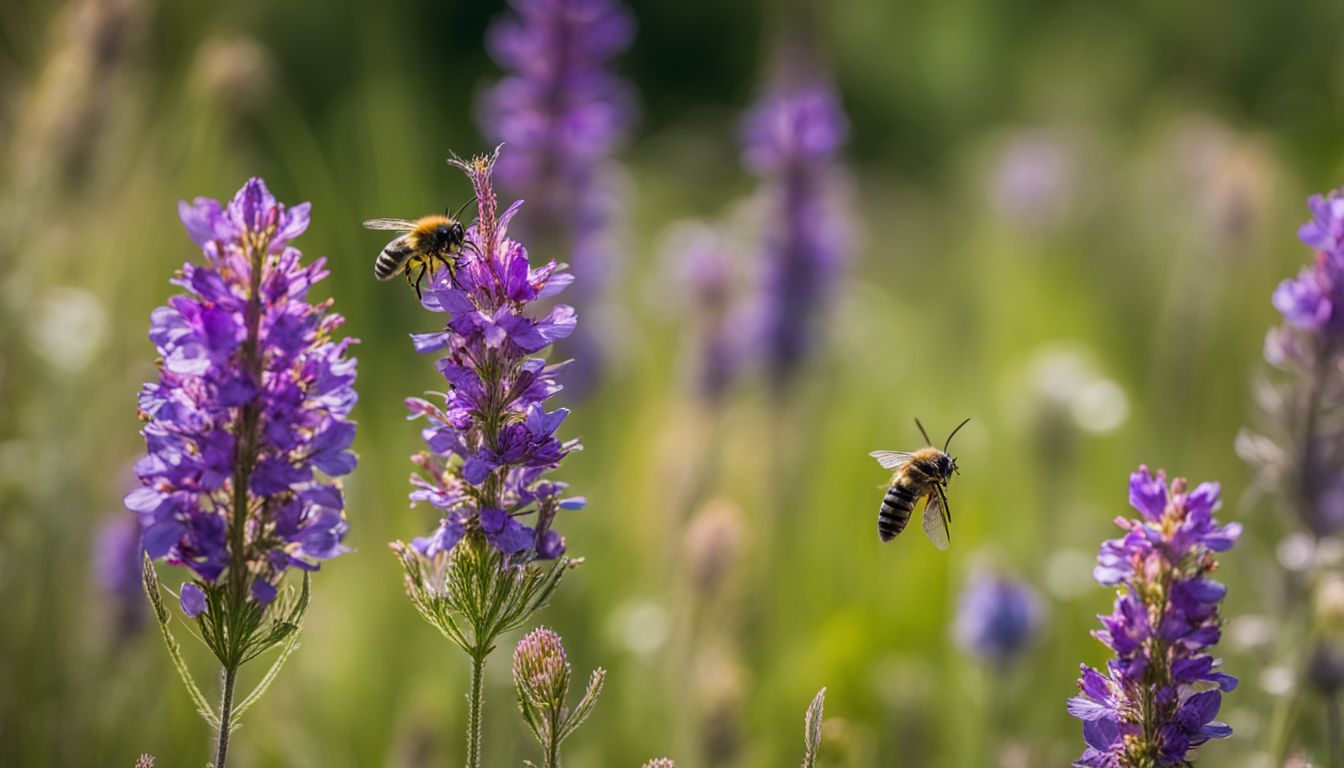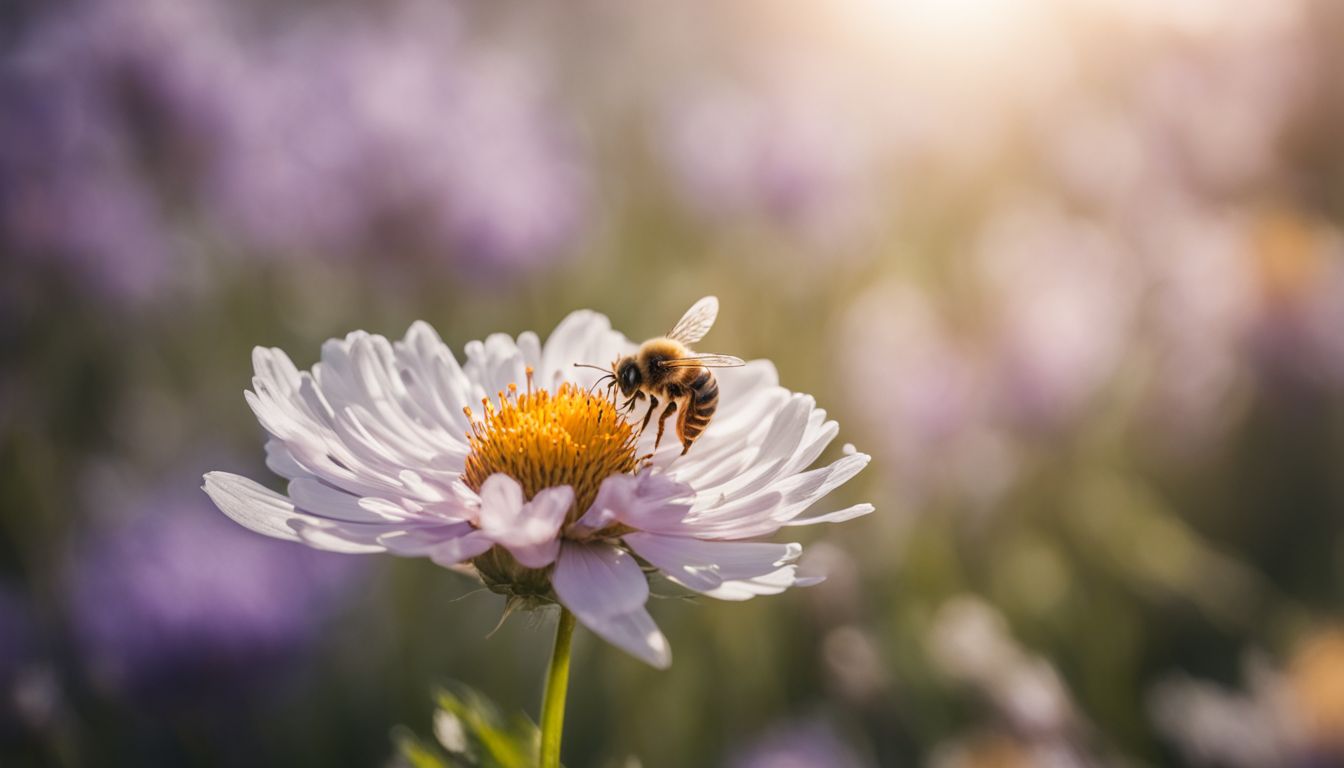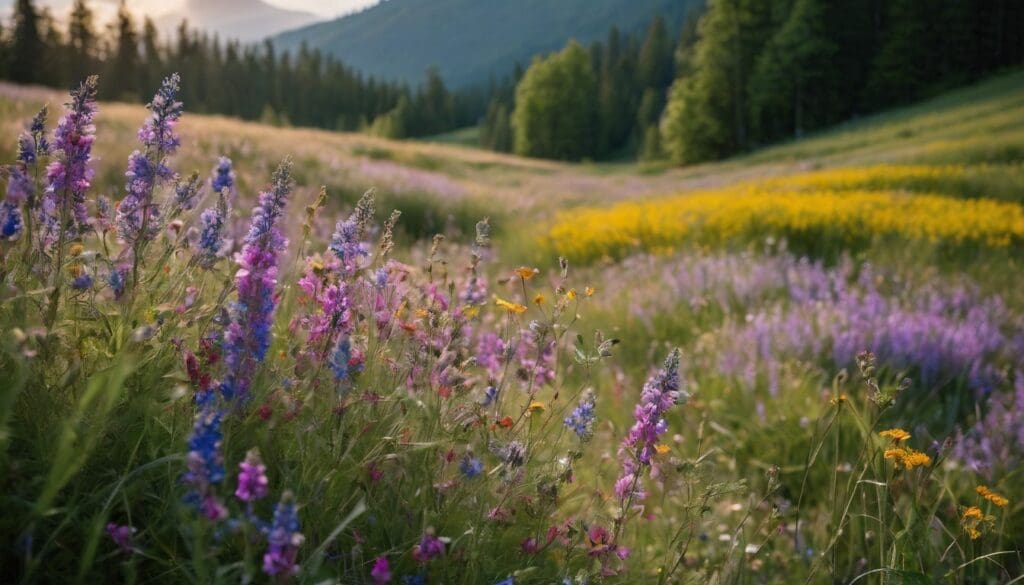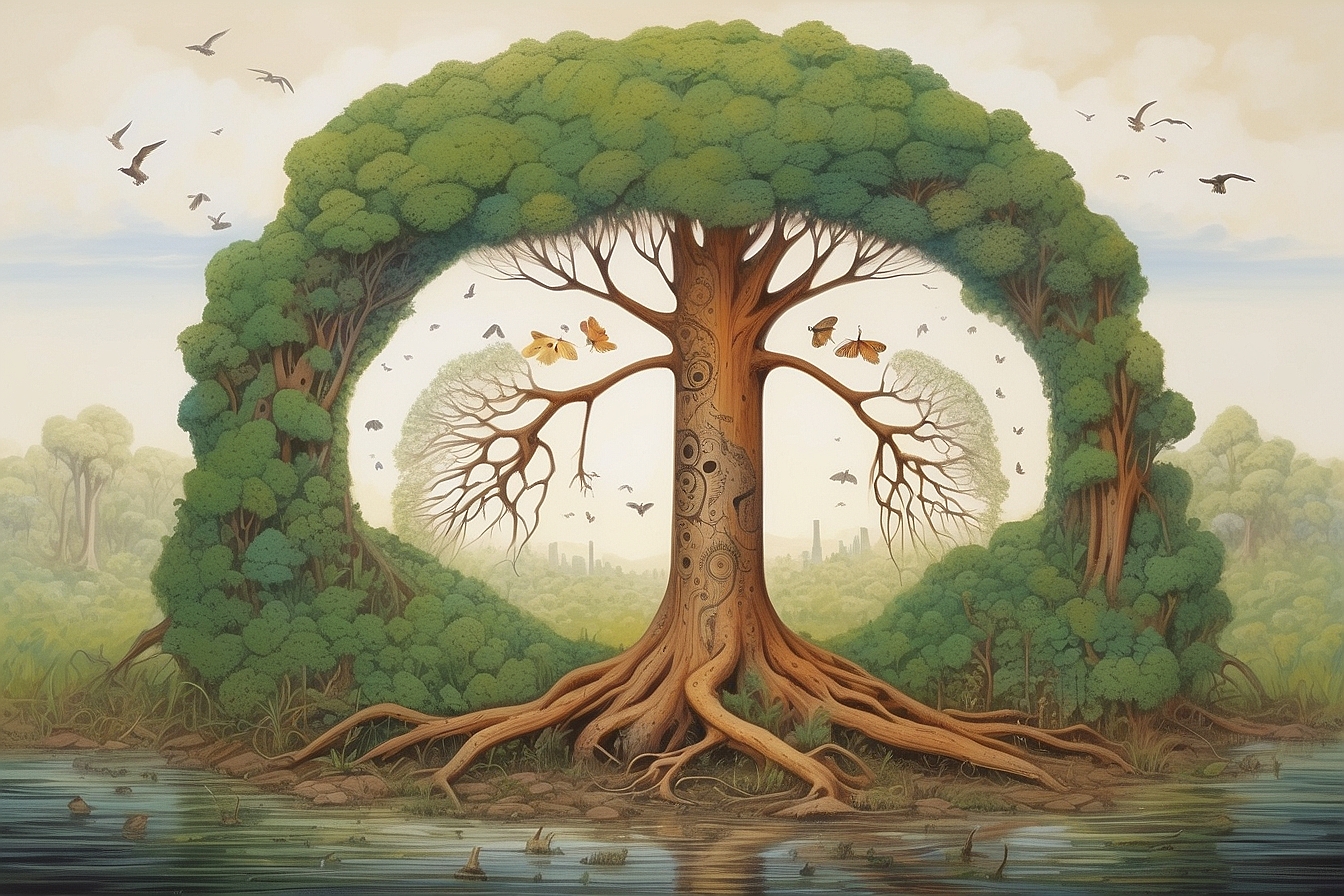It’s become rather apparent that the delightful hum of bees and the gentle flutter of butterflies are not as abundant in our gardens as they once were. We’ve noticed this with a sense of disquietude, reflecting a wider concern: nearly 40% of our insect species are experiencing a stark decline.
Our thorough examination into this troubling issue has shed light on practical steps we can take to aid their recovery. By joining forces, we’re empowered to make significant strides towards safeguarding our diminutive six-legged companions.
Read on to find out how each small effort can contribute to their revival.
Key Takeaways
- Insect populations are plummeting worldwide, with nearly 40% of species in decline, threatening essential ecosystem services like pollination and nutrient cycling.
- Habitat loss from deforestation, urbanisation and intensive agriculture is a significant driver of the crisis, as it strips away the diversity insects need to thrive.
- Climate change affects insects by altering their life cycles and habitats, pushing them towards higher altitudes or latitudes where they face new challenges.
- Pesticides not only target pests but also harm beneficial insects such as bees and ladybugs that are crucial for natural pest control and crop health.
- Human activities have accelerated these problems; however, individual actions like planting native species can contribute to insect conservation efforts.
The Silent Crisis: Unravelling the Decline of Insects

We are witnessing a silent crisis as insect populations plummet around the globe. Our backyards and fields, once buzzing with life, grow quieter each year. Experts warn this decline spells trouble for ecosystems that rely on these tiny creatures for services like pollination, decomposition of organic matter, and maintaining the balance within food webs.
Insects not only fertilise flowers but also serve as vital food sources for birds, amphibians, and mammals.
Habitat loss cuts deep into their homes; intensive agriculture strips away the diversity they thrive upon. Pesticides meant to target agricultural pests inadvertently harm beneficial species such as bees and ladybirds that keep our crops healthy through natural pest control.
The consequences are far-reaching; without action to address these threats, we jeopardise ecosystem stability and resilience essential for our own survival. Next up is understanding how vital these insects truly are: let’s delve into ‘The Importance of Insects in Our Ecosystem and Food Production’.
The Importance of Insects in Our Ecosystem and Food Production

Insects play a pivotal role in keeping our ecosystems vibrant and productive. They pollinate flowers, which is essential for the production of fruits and vegetables. Without these tiny workers, plants couldn’t produce seeds or reproduce.
Imagine walking into a grocery store to find no apples, strawberries, or tomatoes; that’s a world without insect pollination. Insects also recycle nutrients back into the soil by breaking down dead material.
This activity enriches the earth and supports new plant growth.
Our food security hinges on these small creatures too. Birds, bats, and many reptiles rely on insects as their main food source. If insect numbers drop dramatically, those predators face starvation leading to further imbalance in our natural environments.
Moreover, predatory insects like ladybirds keep aphids in check preventing them from destroying crops. This delicate balance ensures we have healthy foods on our tables while maintaining ecological harmony across trophic levels.
The Interconnection of Insect Health and Human Health
We often overlook how deeply insect health affects our own well-being. These tiny creatures play a crucial role in pollinating the food we eat, controlling pests that threaten our crops, and maintaining soil fertility which is vital for growing nutritious produce.
Without them, our plates would be far less diverse and nutritional deficits could become a common problem.
Our health intertwines with the fate of insects in other ways too. Consider the decline of species like bees and butterflies; it’s not just about losing splashes of colour in our gardens but also facing decreases in available medicines.
Many plants that insects pollinate are sources for natural remedies, without which we’d have fewer options to treat various ailments. We must acknowledge this connection and make conservation efforts to preserve these invaluable ecosystem services they provide us – silently, yet significantly.
Effects of Climate Change on Insects
As climate change accelerates, our buzzing allies face mounting threats that risk unravelling the vital roles they play. From disrupted life cycles to the loss of precious habitats, these small creatures bear the brunt of our warming world.
Altered Phenology
Climate change is reshaping the timing of key life events for countless insects. We see butterflies emerging earlier each year, bees searching for nectar when flowers haven’t yet bloomed, and caterpillars hatching at times their bird predators aren’t expecting.
This mismatch in ecological interactions can spell disaster for insect populations that have evolved over millennia to sync with the rhythm of their environment.
Our actions are accelerating changes in this delicate balance, as rising temperatures prompt many species to adjust or perish. Observations confirm a shift across diverse ecosystems; from wetlands where dragonflies used to thrive, to meadows buzzing with pollinators like bumblebees and hoverflies.
These alterations impact everything from nutrient cycling to pest control and pollination, essential processes that sustain our own food production and ecosystem health.
Range Shifts
As insects face the heat from global warming, they’re packing up and moving. We see bees, butterflies, and beetles heading to cooler places, searching for the right temperatures to survive and thrive.
They need these new homes for feeding, mating and laying eggs; their lives depend on finding spots that are not too hot or cold.
Our planet’s rising temperatures push these tiny creatures towards poles or higher elevations—mountains are becoming insect refuges. This journey isn’t easy; it disrupts ecological balance as insects leave some predators behind while encountering new ones.
These shifts can cause a ripple effect, affecting biodiversity in ways we’re just starting to understand. We must take notice of these changes because they signal deeper environmental impacts on sustainability in agriculture and the overall diversity of species within our ecosystems.
Habitat Loss
Habitats are essential for insects to thrive. They need the right conditions to feed, breed, and survive. Yet, we see these natural homes disappearing at an alarming rate due to deforestation, urbanisation, and intensive agriculture.
These actions disrupt ecosystems and leave countless insect species without a place to call home.
We’re witnessing our meadows shrink and wildflowers vanish as land is cleared for new developments or over-farmed with methods that degrade soil health. Without these vital spaces, diverse populations of pollen-loving bees, beneficial parasitic wasps that keep pest populations in check, and many other creatures face serious challenges.
It’s crucial we stand up for their habitats—it’s not just about saving bugs; it’s about protecting the intricate web of life they support.
Disrupted Interactions
Habitat loss paves the way for another pressing issue: disrupted interactions. Insects rely on a delicate balance of predator-prey relationships, but as our planet heats up, these dynamics are thrown off course.
Predators and prey that once existed in harmony may fall out of sync. Certain insects like bees or lacewings could emerge at different times compared to flowering plants they depend on for sustenance, leading to mismatches in pollination.
We’re witnessing a complex network unraveling before our eyes as invasive species encroach upon native insect populations. These newcomers often lack natural predators in their new environments, allowing them to thrive unchecked and preying on endemic species struggling to adapt.
Such disruptions impede not only the diversity of insects but also the critical services they provide us – from cross-pollination that ensures food production to decomposition processes vital for soil health.
Increased Disease and Pests
As temperatures climb due to global warming, we’re seeing a troubling rise in diseases and pests that affect insects. Warmer conditions can speed up the lifecycle of many pathogens and parasites, making them more virulent.
This means our buzzing friends are facing increasing threats from foes they once easily shrugged off. We must recognise these subtle yet significant shifts if we hope to protect insect populations from further decline.
Insects also struggle with the chemical pesticides used in agriculture which can weaken their immune systems, leaving them even more vulnerable to disease. Invasive species introduced by human activity spread new illnesses and outcompete native insects for resources.
Our actions have inadvertently given these pests an upper hand, tipping the balance against delicate ecosystems that rely heavily on healthy insect populations for things like pollination and nutrient cycling.
It’s clear; our fight to restore biodiversity includes tackling this surge in disease and unwelcome pests head-on, ensuring our six-legged allies thrive once again.
Evolutionary Challenges
Insects face overwhelming evolutionary challenges in the wake of climate change. Warming temperatures and environmental shifts force them to adapt rapidly, changes that would typically unfold over many generations.
Their genetic diversity comes under threat as populations shrink and habitats degrade, making it harder for them to survive the new conditions.
We must acknowledge these pressures if we’re to support sustainable agriculture and conserve biodiversity. Insects require specific conditions for successful reproduction and when their natural timing is thrown off by altered phenology, fertilisation rates plummet.
They struggle with increased disease prevalence and a scramble for resources amidst wildfires and rainforest degradation which are direct impacts of our changing climate. Our actions today will determine whether these tiny but vital creatures can surmount the hurdles they face or if they’ll continue on a path towards decline.
The Uphill Struggle: Insects Seeking Refuge in Higher Altitudes
As the climate crisis intensifies, we’re witnessing a remarkable phenomenon where many insects are marching to higher altitudes in search of cooler habitats. This desperate quest for refuge not only highlights their adaptability but also underscores the urgency with which we must address their silent decline.
Rapid Uphill Movement
Insects are swiftly scaling mountains in search of cooler habitats, racing against the rising temperatures caused by climate change. They’re climbing to higher altitudes at an unprecedented pace, driven by the need to survive in suitable climates.
Yet this rapid uphill movement presents its own set of daunting challenges for our six-legged companions.
We’ve observed diverse species, from butterflies to beetles, making this ascent and altering their ranges to adapt. Sadly, these new homes come with fierce competition for resources and sometimes inhospitable conditions that put extra stress on their already fragile populations.
Our actions have a part in easing their struggle; we can contribute through conservation efforts that protect natural habitats and create corridors for safer migration.
Tracking Climate Change
We track climate change by observing how insects adapt to new conditions. Shifts in their behaviour and populations signal the impacts of a warmer planet. Scientists use data on flowering times, migration patterns, and alterations in species ranges to understand these changes.
This information tells us about the health of our natural world.
Our role as citizen scientists is crucial here. We can help document shifts in insect phenology—the timing of natural events—and contribute to research efforts led by experts like Dave Goulson.
Together, we gather evidence that guides conservation strategies for protecting these vital creatures against a shifting climate backdrop.
As we delve into the struggles faced by uphill migrants seeking refuge from changing temperatures..
Challenges Faced by Uphill Migrants
Insects are on the move to higher altitudes, escaping the impacts of climate change. Their journey up the slopes brings about a host of new challenges.
- Limited Habitats at Higher Elevations
- Food Scarcity Affects Reproductive Success
- Increased Competition Among Species
- Difficulty in Finding Mates
- Predators and Pests May Follow
- Disruption in Pollination Services
- Loss of Genetic Diversity
The Threat to Specialised Butterflies
We’re witnessing a real crisis for specialised butterflies, whose very existence is hanging by a thread. These delicate creatures rely on specific plants and stable environments to thrive, but as their habitats shrink and climates change, they struggle to survive.
Imagine the Monarch butterfly’s marathon migration becoming impossible because milkweed—the only plant its caterpillars can eat—is vanishing from the landscape.
Our actions have unintended consequences that hit these specialists the hardest. Pesticides meant for pests also poison the plants and flowers butterflies need. Land development robs them of their natural homes, leaving nowhere to lay their eggs or find nourishment.
It’s crucial we work towards safeguarding what remains of these insects’ diminishing havens before it’s too late. Together, we must ensure our meadows and wildflower fields remain unspoiled sanctuaries for these irreplaceable pollinators of our planet.
The Role of Humans in the Decline of Insects
Our actions have played a significant part in the plight of insects. Consider how we’ve transformed landscapes: clearing forests for agriculture, building cities where meadows once bloomed, and creating pollution that affects air and water quality.
These changes disrupt insect habitats on a massive scale, leaving many species struggling to survive.
Furthermore, our reliance on pesticides has unintended consequences. Spraying crops with chemicals might target pests but also kills beneficial insects like bees that pollinate plants and natural predators that keep harmful bugs in check.
Every application tips the delicate balance of ecosystems toward decline. Such widespread use of toxic substances is not just harming individual insects; it’s threatening whole populations.
Looking ahead to ‘9. Conclusion,’ let us carry forward the understanding of these challenges as we seek ways to reverse insect declines and protect biodiversity for future generations.
Conclusion
We can’t ignore the dwindling numbers of insects any longer. It’s on us to acknowledge their plight and take swift action. Every small step counts, from planting wildflowers to creating bug hotels in our gardens.
Together, we hold the power to reverse this crisis and protect these vital creatures for future generations. Let’s harness that power before it’s too late.
FAQs
1. What is ‘Insectageddon’ and why should we be concerned?
‘Insectageddon’ refers to the rapid declines in biodiversity, with a focus on the alarming disappearance of insect populations around the world, which can upset ecosystems.
2. How does the decline of insects impact other animals?
As many animals rely on insects for food, including bird species that are insectivorous or creatures like bats and frogs, their dwindling numbers could have vast ecological consequences.
3. Can people do anything to help support insect populations?
Definitely! You can create a bug hotel in your garden to offer shelter for insects like bees (bombus) or encourage local initiatives in citizen science projects aimed at protecting these vital creatures.
4. Are all insects declining at the same rate everywhere?
Not exactly; while many types of beneficial bugs like earthworms and pollinators are seeing declines, others such as certain mosquitoes might not be affected equally due primarily to environmental adaptations.
5. Why is it important to preserve diverse insect species aside from them being food sources?
Insects play critical roles beyond just serving as prey; they contribute significantly through pollination, recycling nutrients back into soil, health protection with their antimicrobial properties, and maintaining natural balances within various habitats from gardens to rainforests.





